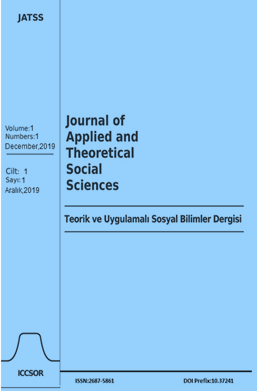Discovery of The New World’s Effects on European Economy
Abstract
European explorers and contemporary states have attempted to find new routes, regions due to various goals. They have explored the Americas, New World and have taken advantage of these explorations. Mines which provides direct wealth through usage of commodity money, have been extracted and transported, Americas’ plants to the continental Europe which have led to growth in population and GDP have been transplanted to the Europe. It is argued that mines have been brought to the Europe, so accumulation of capital has occurred that leads to a massive influx of cash. Also, transplanted nutritive species have provided the population growth which has been effective on GDP increase with combining the accumulated money.
Metrics
References
Childs, Wendy R. (1995): "1492-1494: Columbus and the Discovery of America." The Economic History Review, New Series, 48, no. 4 755-66. DOI: https://doi.org/10.2307/2598134
Plys, Kristin. (2013): "Eurocentrism and the Origins of Capitalism." Review (Fernand Braudel Center) 36, no. 1 43-77
O'Rourke, Kevin H., and Jeffrey G. Williamson. (2009) "Did Vasco Da Gama Matter for European Markets?" The Economic History Review, New Series, 62, no. 3 656-81. DOI: https://doi.org/10.1111/j.1468-0289.2009.00468.x
Phillips, William D. (1992) "Africa and the Atlantic Islands Meet the Garden of Eden: Christopher Columbus's View of America." Journal of World History 3, no. 2 155-63.
Lane, Frederic C. (1950) "Oceanic Expansion: Force and Enterprise in the Creation of Oceanic Commerce." The Journal of Economic History 10 20-30. DOI: https://doi.org/10.1017/S0022050700065311
Lüthy, Herbert. (1961) "Colonization and the Making of Mankind." The Journal of Economic History 21, no. 4 488-91. DOI: https://doi.org/10.1017/S0022050700109003
Brading, D. A., and Harry E. Cross. (1972) "Colonial Silver Mining: Mexico and Peru." The Hispanic American Historical Review 52, no. 4 543-76. DOI: https://doi.org/10.2307/2512781
Mauro, F. (1961) "Towards an 'Intercontinental Model': European Overseas Expansion between 1500 and 1800." The Economic History Review, New Series, 14, no. 1 1-3. DOI: https://doi.org/10.2307/2591350
O'Brien, Patrick. (1982): "European Economic Development: The Contribution of the Periphery." The Economic History Review, New Series, 35, no. 1 4-18. DOI: https://doi.org/10.1111/j.1468-0289.1982.tb01183.x
Blitz, Rudolph C. (1967) "Mercantilist Policies and the Pattern of World Trade, 1500-1750." The Journal of Economic History 27, no.1 39-51. DOI: https://doi.org/10.1017/S0022050700070698
Nunn, Nathan, and Nancy Qian. (2010) "The Columbian Exchange: A History of Disease, Food, and Ideas." The Journal of Economic Perspectives 24, no. 2: 165-79. DOI: https://doi.org/10.1257/jep.24.2.163
Nunn, Nathan, and Nancy Qian. (2011) "The Potato’s Contribution to Population and Urbanization: Evidence from a Historical Experiment." The Quarterly Journal of Economics 126, no. 2 600-658. DOI: https://doi.org/10.1093/qje/qjr009






















